Before you get into content creation, you need to start by building a solid editorial plan. This plan should be the structure on which you base your content marketing strategy.
It is precisely through this plan that you will be able to define both the type of content and its destination. The concept of an editorial plan, in fact, is applicable to your blog and also to your social media strategy.
That’s why in this article, Content plan: what is it, how to use it and which tools to use, we’re going to see what an editorial plan entails, what aspects to consider before we can define it and what goals it will help us achieve.
We’re also going to see how to set it up, what tools we can use and what strategies to adopt for social media content.
Table of Contents
What is an editorial plan
The term “editorial plan” has entered the mainstream language today, but what is its true meaning? You won’t be surprised to learn that the editorial plan originated, as the name suggests, in the publishing industry.
But what is it for? To understand it let’s start from the definition of “plan” that we find in the dictionary.
plan: A program that determines the means, tasks, and timeframe for achieving a particular result at the deadline.
The editorial plan, therefore, is nothing more than a program through which we define tasks, which in this case represent publications. However, with the advent of the digital era, the concept of the editorial plan has been extended to other content as well.
Today, when we speak of an editorial plan, we no longer refer only to the field of publishing. The term, therefore, is translated to the planning of content to be published on websites, corporate blogs and even social networks.
However, even if the scope is no longer strictly that of publishing, the purpose of the editorial plan does not change and is therefore always to help us to draw up a schedule. Let’s take a closer look at what it can be used for.
What the editorial plan is used for
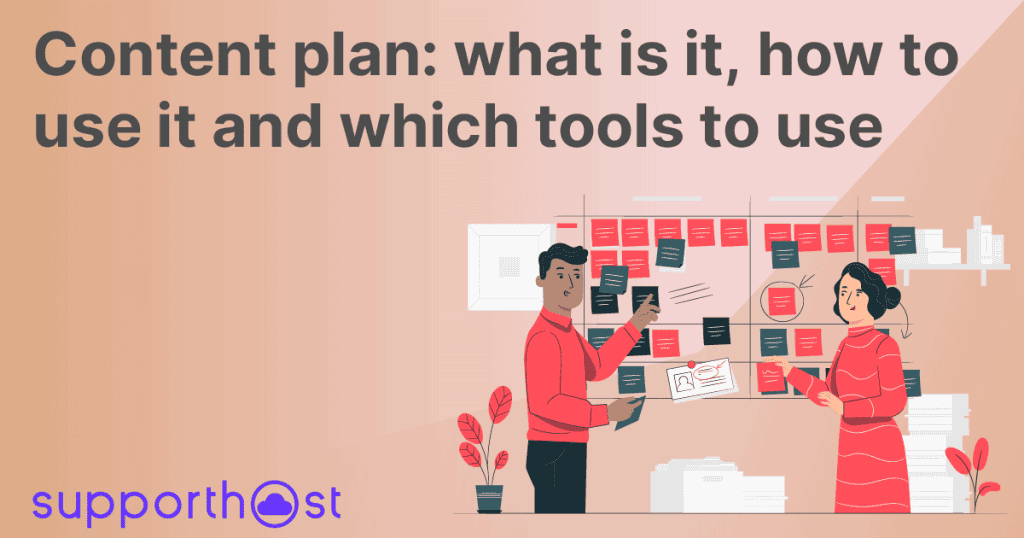
As you may have already begun to understand, the editorial plan will guide you in planning your content. In this article, I will refer specifically to the editorial plan for a blog or a site, but the same concepts also apply to social media.
Having a clear idea of what kind of articles you are going to publish and in which period you are going to publish them is essential before starting with the actual publication. Why?
The answer is simpler than you think. By planning in advance you have many advantages because you define:
- what to write and how to write it (i.e. establish the type of content)
- in which period to present a certain topic ( for example think about holidays and other events)
- to whom your content is addressed.
Establishing these parameters, before you start making content, helps you save a lot of time. Indeed, in this way, the time you spend planning will be the time you save for later on when you get into the heart of the publication.
In addition, by doing this, you will never run out of ideas on what content to propose to your audience and you can establish a schedule to publish. In order to set a precise date for your publications, you’ll also have to draw up an editorial calendar. What is the difference between the two?
Editorial plan and editorial calendar
Your publication plan is nothing more than a list of topics, or macro-topics that you have decided to focus on.
In the case of an editorial plan for a blog, it will then correspond to the list of topics on which you want to focus your articles on. For a social media editorial plan, on the other hand, they will be themes that you can develop in the form of posts and stories.
In this case, in addition to the texts, images will also be essential, but we will come back to this point later.
After choosing the content, you will also have to create an editorial calendar that will allow you to give a precise structure to the publication of the content.
It will be through this calendar, in fact, that you will set deadlines to publish. It is important to try to maintain a certain consistency when publishing. This applies to both the company website and social media itself.
How to set up an editorial plan
When planning your content, you need to keep in mind that your editorial plan will be subject to constant change. This will happen because the types of topics you offer will also be different from each other.
That’s why you can’t be rigid in your content planning and you’ll have to be ready to build a fluid editorial plan.
Let’s take a quick look at what that means by going over the types of content.
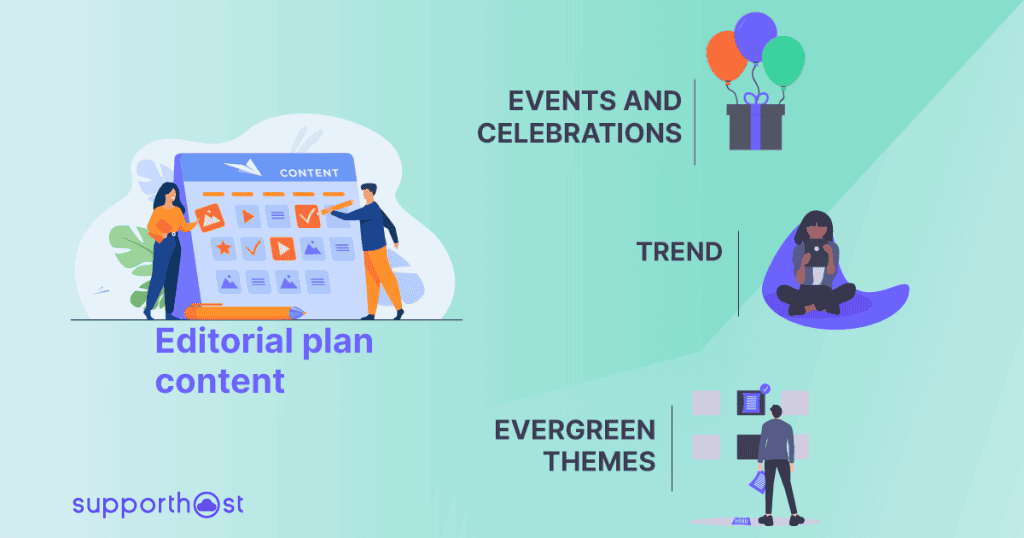
On the one hand, we have content related to occasions, which are also called seasonal. These topics will be those related to certain events and intended, therefore, to be published only in certain periods of the year.
An example of this type of content can be a post that recommends which type of sunscreen to use. Needless to say, it will be able to generate traffic, especially in the summer months.
Then there are those trending topics, dictated, therefore, by the trend of the moment. This type of content is definitely the most short-lived. Exploiting them in time will make you gain visibility, but will not guarantee you long-term effects.
Finally, there are the evergreen topics, those on which you can base your mainstay content. It’s these topics that will bring you the bulk of your organic traffic. I’m talking about all those topics that your audience will never lose interest in.
Editorial plan: the template to start from
As we’ll see later, when I explain how to create an editorial plan, you’ll understand that there is no fixed rule to follow.
The editorial plan of your blog, site, or social media, is personal because, as a matter of fact, it must help you in planning your content.
That’s why rather than looking for a template for the editorial plan to follow to the letter, you should rather create one tailored to your needs. You might just need an Excel spreadsheet or you might prefer to use just pen and paper.
Later on, I’ll explain in detail the tools that can help you create your editorial calendar and share it with your collaborators.
In any case, whichever method you decide to use, there are some elements that cannot be missing in your editorial plan. What you need to do before drafting it, then, is to gather this information, let’s take action and see how.
How to create an editorial plan
The function of the editorial plan is to help you in your work of creating and publishing content. That’s why it’s important that it contains only the information you really need.
That’s why, before creating the editorial plan, you need to take some preliminary steps.
Choose the target
Whether you want to create a social editorial plan or for a blog, you’ll need to define your project at the outset and then you can get started.
One of the first things to do is to define your audience (or target audience). For a company, the audience will most often coincide with the typical buyer (or buyer persona).
Defining your audience will help you understand the needs of the users who visit your site and respond to those needs. But how do you accomplish this?
To help you define your ideal audience, dedicated SEO tools that analyze user searches come into play. You can do this by using keyword analysis tools such as SEOZoom, Ahrefs, Ubersuggest and Answer The Public, just to name a few. From this analysis, you will be able to derive interesting information that will allow you to understand what people are searching for and what they want.
Keyword analysis will thus guide you in choosing your content, but first, there is another step to take.
Tip: You can use the IA tools to generate ideas for new blog posts. Read our guide to learn how to use ChatGPT in WordPress.
Setting goals
Before an editorial plan, you must also set goals. Surely you are creating content for a purpose, which can be, for example, to generate new contacts, but also to retain your audience.
It all starts from here: the sooner you clarify what you want to achieve, the sooner you will be able to do it.
Now let’s see where to start when choosing your content. Remember, however, that for an effective strategy you must also monitor the efficiency of your site and verify that it is optimized through an SEO audit.
Choosing content
Of course, the choice of content to be offered can not start from a good analysis of the market. Look around, analyze what your competitors are doing, and make the most of the content that has more visibility.
You can start from the analysis tools to understand which contents are the most read and searched for. By researching for keywords and associated words, you’ll gather a wealth of information that you’ll then need to rearrange.
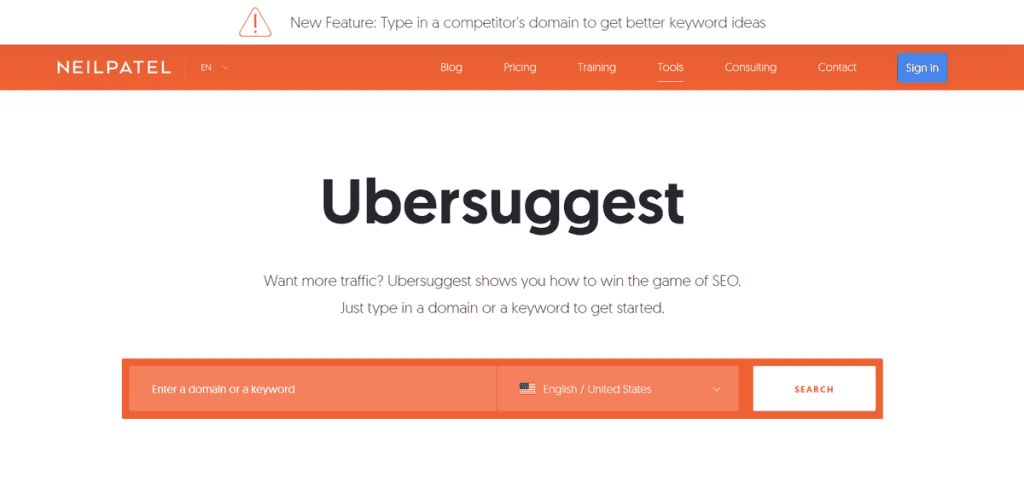
Starting from the main keyword, you can create a concept map, or a tree-like structure to organize your content. The root will be the generic topics, while the leaves will represent the more specific topics.
To accomplish the path that will allow you to start from generic topics and then get to the detailed ones you can use the related keyword research tools.
You’ll also need to extend the collection of this quantitative data and do more in-depth content analysis. In a nutshell, analyze the network, starting with social networks or various communities.
If you want to go deeper into content creation for your blog, I suggest you read the tips on how to write an article.
Don’t forget that it can also be very useful to know what searches users make on your site.
To do this, you just need to use the Site Search function provided by Google Analytics. After activating the monitoring on the search bar, you will be able to view the data collected through the Reports.
Analytics also offers you other interesting statistics about the behavior of visitors to your site. For example, it allows you to track contact forms .
You can take advantage of this knowledge in order to offer useful content to your audience and, in this way, to build their loyalty. Now let’s see what other tools you can use.
Editorial plan: useful tools and programs
The editorial plan will serve as a guide for creating the actual editorial calendar. It will be with this editorial calendar, precisely, that you will define the dates of publication of the contents.
How you draft your editorial plan is up to and the same goes to the editorial calendar. When you need to work with several collaborators, however, different tools can help you, let’s see the main ones.
Especially when you’re going to create your editorial calendar you’ll need to define publication dates. Google provides you with several good tools such as Google Calendar that allows you to create a calendar and share it.
Another way to share the editorial calendar with your collaborators is to create a working document with Google sheets. You can start with a blank sheet or even a preset template, and then simply invite collaborators to edit the document.
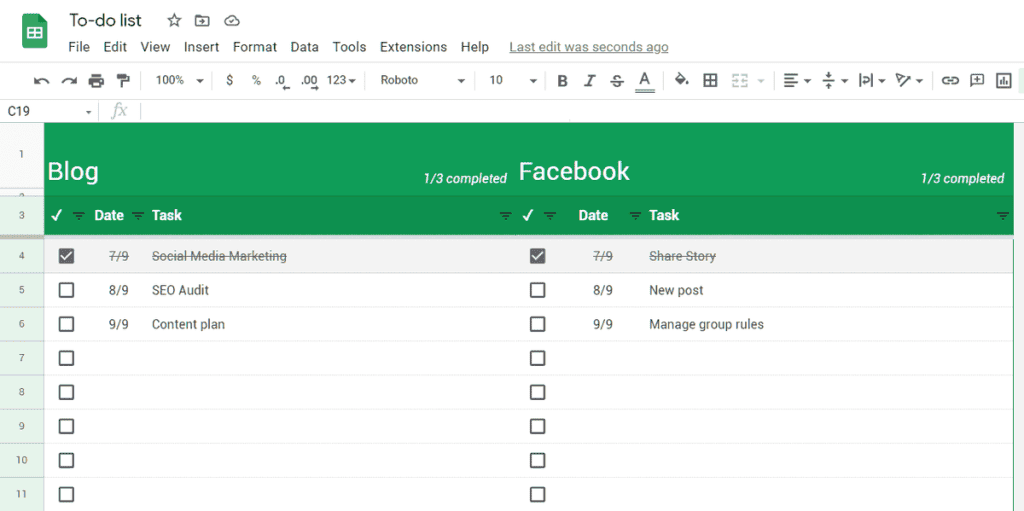
Google isn’t the only one to offer you useful planning tools. To manage your editorial plan, but also many other projects, there are specialized tools such as Trello and Asana.
Trello allows you to create bulletin boards in which you can make real lists. Each list item, i.e. a board, can, in turn, contain additional information: such as checklists and attachments.
You can also categorize items with labels and assign specific tasks to each contributor. In addition, you can also start your project from one of the available editorial calendar templates, such as the one shown below:
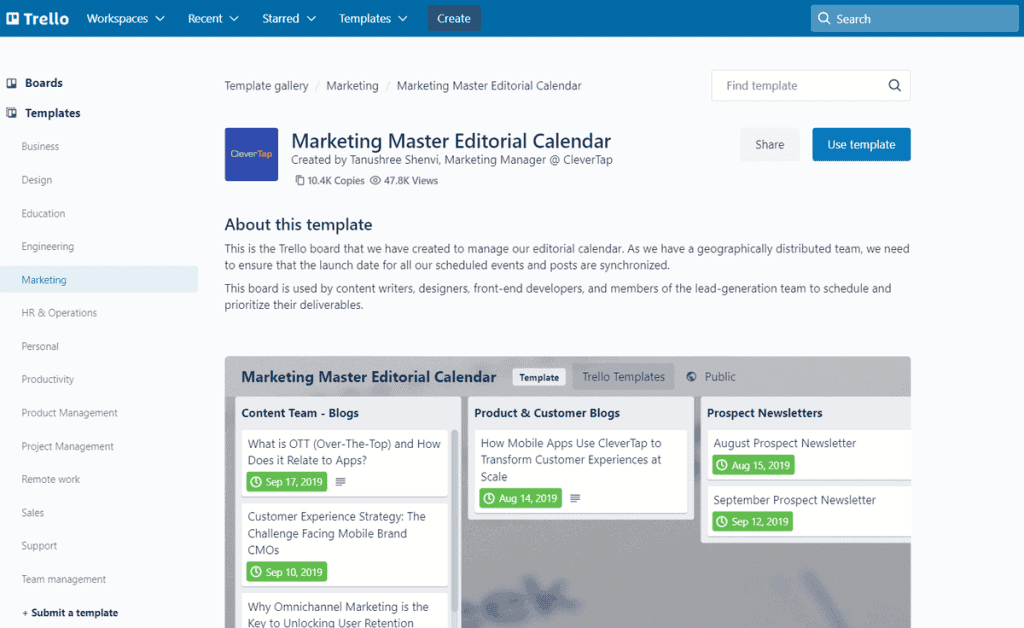
Just like Trello, Asana also offers you the possibility to split your projects into secondary objectives, simplifying your work.
If you prefer, you can also use a WordPress plugin that allows you to create an editorial calendar directly on the platform. It’s very useful because you can make it directly accessible to all collaborators.
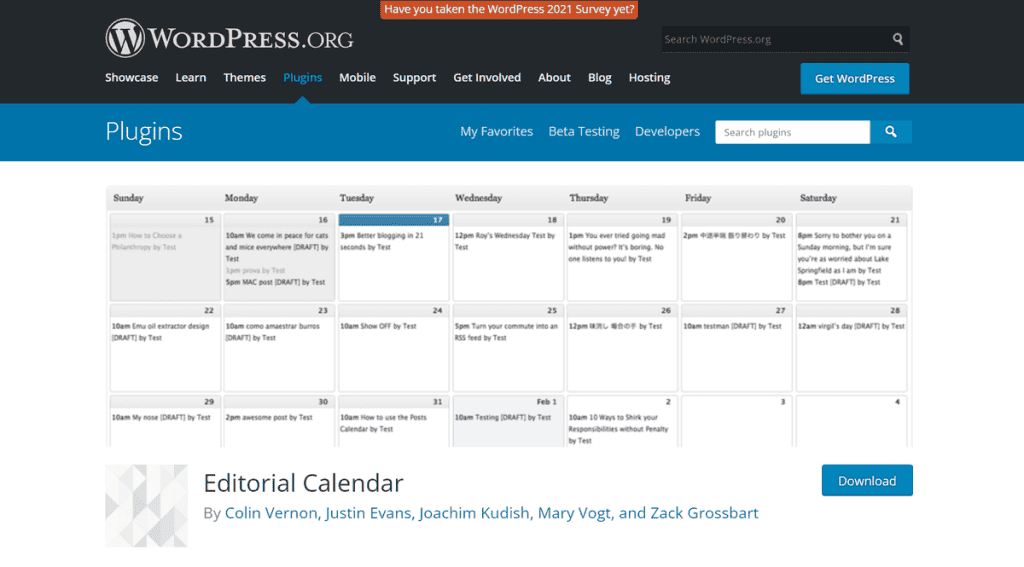
One of them is Editorial Calendar which you can find directly through the WordPress plugin directory.
How many types of editorial plans are there?
Naturally, there isn’t just one type of editorial plan. In addition to what you can draft for your blog content, you may also need to outline the schedule for your social content.
That’s not all, because you might also need a schedule if you decide to create newsletters for your clients or your users in general.
Basically, you need to plan in all cases where you need to keep track of your content scheduling and want to avoid being caught off guard.
Social Editorial Plan
When planning your posts, sometimes sketching out the topic in broad strokes is all you need. Writing an editorial plan for social media, however, requires a few more steps.
Firstly, you have to think about the platform on which the content will be published. The choice of the social platform depends on the type of audience you are addressing, but also on the nature of the content itself.
On Twitter, your texts must be within the maximum limit of 280 characters. Instagram, on the other hand, places a higher value on images than text. This is precisely why it’s important to know what sizes are appropriate to publish your photos in an optimal format. If you’re interested in learning more about this, you can check out our article on Instagram photo sizes.
Each social media platform, moreover, will allow you to take advantage of different features. On Facebook you can use groups to analyze the community, Instagram hashtags let users find you easily and recognize your brand.
So you will have to plan your content based on the basic rules of each social network. In any case, for any post, the careful choice of images must become a golden rule. It will be precisely this, in particular, that will attract the attention of a visitor to your post.
As it happens with the articles of your blog, even on social media you need to focus on different types of content. In addition to images, you can also publish videos, do live broadcasts and take advantage of stories.
Each of these tools allows you to communicate (more or less directly) with your audience. You just need to be able to exploit them properly and being able to do so is the basis of an effective Social Media Marketing Strategy.
Depending on the goals you set yourself and the number of social channels you want to be present on, it is always better to appoint someone who is entirely responsible for their management, namely a Social Media Manager.
Conclusion
In this article, Content plan: what is it, how to use it and which tools to use, we looked at the importance of an editorial plan for your blog and social media channels. We started with the kind of analysis and considerations you need to make before you begin setting it up. We also figured out where to start when choosing content.
As you’ve seen, there are several tools that can help you with both writing the plan and the editorial calendar. What about you? Where do you start when planning your content and what tools do you love to use? Let me know in the comments below.


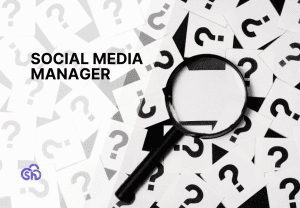

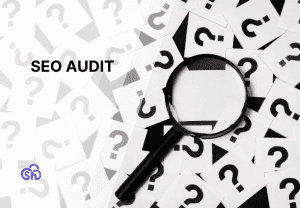
Leave a Reply